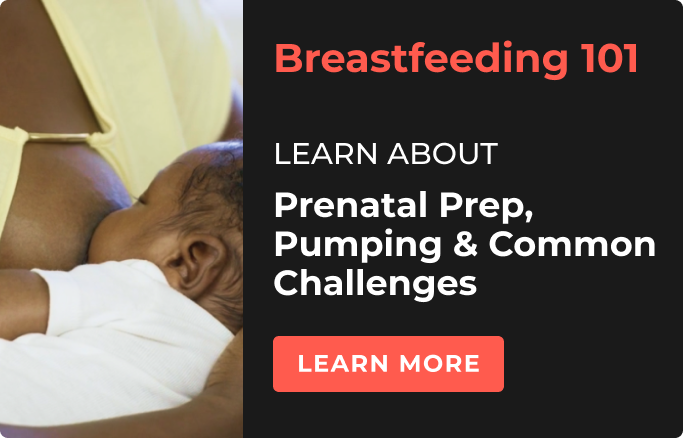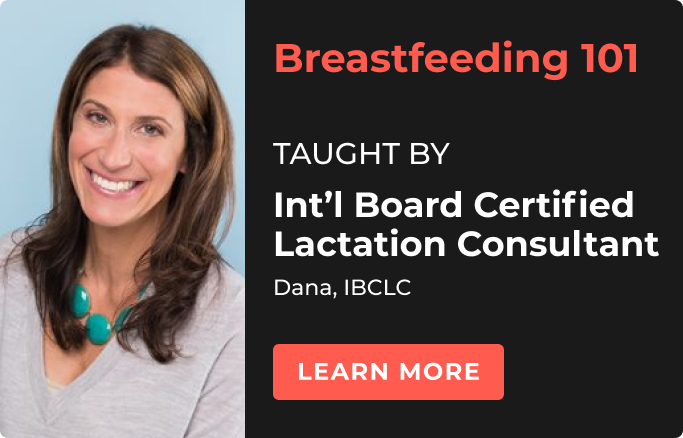Having a baby can be stressful for any new parent. If you are temporarily separated from your baby at birth because they are premature or sick, that can feel downright overwhelming -- especially when it comes to breastfeeding.
Just know that even if it may be a little more challenging if your baby is in the NICU, breastfeeding is extremely comforting and healthy for the baby and is one of the most important things you can do. By giving your baby breast milk, it’s like you’re giving them a medicine no hospital can make! With this in mind, we’ve asked our breastfeeding experts to outline what you need to know when feeding a sick or premature baby, if you are temporarily separated from them at birth.
Colostrum & Breast Milk is “Liquid Gold”
You may already know breast milk is the gold standard for all newborns, and it’s especially important for premature and sick babies.
Here’s why:
- It’s packed with antibodies that help protect baby against infections—this is especially important for premature babies at higher risk for infection.
- It’s more easily digestible than formula and is gentler on your preemie or sick baby’s stomach. Premature babies who are breastfed are also less likely to develop intestinal infections than babies who are formula-fed.
In addition, the milk from a mom with a premature baby is slightly different in composition from milk from a mom with a full-term baby. Studies have found more fat, protein, and certain minerals in "preterm milk" than in "term" milk. These are important for the growth and development of a high-risk baby's eyes, brain, and nervous system. Basically, your body is intuitive at knowing exactly what your baby needs and producing it -- pretty incredible, right?!
Try “Hand Expressing” Within the First Few Hours
Research shows that the sooner you begin stimulating your milk supply, the better. The time right after giving birth can feel crazy with tons going on, but it’s important to start thinking about initiating your milk production ASAP so you can be ahead of the game! Here’s what you need to know:
- Our experts say to begin breast milk initiation within the first few hours after delivery.
- Start with expressing milk by hand, a.k.a. using your hands instead of your baby or a breast pump to get the breast milk out of your breasts. This may be easier than sitting up in bed and using an electric breast pump. Think of this early action as sending a message to your body that baby is here and you are ready to start producing breast milk.
- Then, you can move to the electric pump a few hours later when things settle down a little.
- If you can’t find time to express milk in the first few hours...don’t panic! Just start as soon as you can.
Pro-Tip: A study published in the Journal of Perinatology showed that moms who pumped *and* practiced hand expression consistently in the first few days after birth produced approximately 50% more milk than women who only used the electric pump.
What if you Have Trouble Producing Milk Right Away?
The first day, you may only see drops of colostrum or even nothing at all. It’s OK -- this is normal! So, don’t be too hard on yourself. Remember, by stimulating your breasts, you are sending a message to your body that you want/need milk. Over the first few days, you should start seeing your collection increase. Some moms find logging their milk output is helpful to keep on track and motivated.
Let’s talk milk goals: Try to hit 500 mL or more of milk each day by the end of the second week. But always keep in mind that everyone is different. If you are having any issues or concerns, seek assistance from a certified lactation consultant and your baby’s health care team. The first two weeks are the most important in establishing supply, so don’t wait to seek help!
- Keep a Schedule
In order to establish a strong milk supply, you’ll want to start as soon after birth as possible and then continue to pump or hand express as often as baby will be eating, or around every 3 hours for about 20 minutes. Taking a bit longer of a break overnight is ok, but don’t go more than five hours without pumping.
- Practice Skin-to-Skin
Skin-to-skin contact, also known as “kangaroo care,” is the term used for placing an unclothed (but diapered) baby on mom's bare chest. Kangaroo care in the NICU has many scientific benefits for both mom and baby, including helping baby prepare for breastfeeding, helping increase hormones that support milk production, regulating baby's temperature and breathing, reducing stress, enhancing bonding and more. Some babies can start kangaroo care soon after birth, while other babies may need to wait. Did you know you can have skin-to-skin time with your baby even if he or she is connected to NICU equipment? Be sure to ask your baby’s healthcare providers when you can start kangaroo care with your baby. And, it’s not just for mamas! So grab your partner for a skin-to-skin session too.
Tips to Help Initiate and Maximize Your Milk Production
- Use hand expression in addition to pumping to help boost supply. Also, use breast massage and breast compression while you are pumping to help empty breasts effectively.
- Try pumping after you hold the baby skin-to-skin (when the baby is able). Having direct skin-to-skin time is beneficial for both you and baby, including helping milk production.
- Ensure you are using the best size breast shields and/or flange for you. Proper breast shield fit is critical to ensure both comfort and optimal pumping output. If you don’t think the pump is emptying your breasts effectively, consider trying a different shield size. Watch Tinyhood’s pumping class, check with the manufacturer, or consult with a Lactation Consultant for information on sizing and fit options.
- Try applying heat to your breasts before pumping to help increase milk volume.
- Consider throwing a blanket or cover over the bottles so you aren’t focusing on how much (or how little) milk is coming. Similar to the old saying, a watched pot never boils.
- While you are pumping, try looking at pictures or videos of baby, or smelling something that reminds you of baby - like a piece of their clothing or a blanket. This can help get your hormones flowing until you have the real thing snuggling with you at home!
Don’t forget to check out our Breastfeeding 101 class for everything you need to know about breastfeeding including pumping, addressing common challenges, and more details on how to increase your milk supply.




